THE LIGHT GIANT – A Lens That Made History
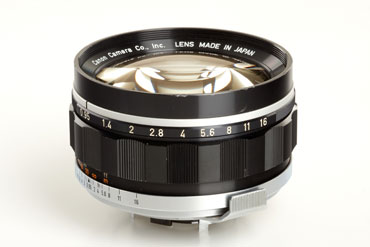 Everybody has heard of Canon’s “dream” lens, the all-manual 50mm/f0.95, made for Canon rangefinder cameras. It is on the eternal wishlist of many a photographer because of its amazing f/stop and the sheer notion of its ultra-wide-open capabilities. The performance of the lens is nothing special though, as many who fork out big bucks to get it realize when it is already too late (its autofocus cousin, the 50mm/f1.0, which sells for $3,000+ on eBay these days, shared a similar performance glitch), but the irrational allure of owning a piece of glass on the boundaries of optical capabilities is nevertheless there.
Everybody has heard of Canon’s “dream” lens, the all-manual 50mm/f0.95, made for Canon rangefinder cameras. It is on the eternal wishlist of many a photographer because of its amazing f/stop and the sheer notion of its ultra-wide-open capabilities. The performance of the lens is nothing special though, as many who fork out big bucks to get it realize when it is already too late (its autofocus cousin, the 50mm/f1.0, which sells for $3,000+ on eBay these days, shared a similar performance glitch), but the irrational allure of owning a piece of glass on the boundaries of optical capabilities is nevertheless there.
But lo and behold, the f0.95 is not as fast as it gets. Several lenses from manufacturers such as Fuji, Kowa and Rodenstock venture below the decimal point (as far as f0.75), but only one turbo-fast lens achieved Hollywood (and world) fame because of its speed – the Carl Zeiss Planar 50mm/f0.7.
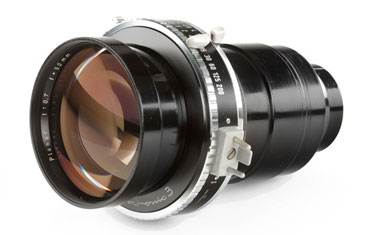 According to Marco Cavina, who wrote an extensive article about the Planar, the mastermind behind this lens was Dr. Erhard Glatzel, the chief optical designer at Zeiss in Oberkochen. For his extremely complex calculations, he used an IBM 7090, a giant supercomputer, which filled the entire room and cost almost $3 million. He made four prototypes of this lens before the final version was created. But not even Glatzel invented the design – it was based on a double-Gauss type calculation from the close of the 19th century. It was revived briefly in the late ‘20s and early ‘30s (the latter by Kodak), but it was not until the first shots of the dark side of the moon were made by NASA (which was dissatisfied with the performance of the Angenieux 100mm/f1) that this lens was commissioned for production in Oberkochen.
According to Marco Cavina, who wrote an extensive article about the Planar, the mastermind behind this lens was Dr. Erhard Glatzel, the chief optical designer at Zeiss in Oberkochen. For his extremely complex calculations, he used an IBM 7090, a giant supercomputer, which filled the entire room and cost almost $3 million. He made four prototypes of this lens before the final version was created. But not even Glatzel invented the design – it was based on a double-Gauss type calculation from the close of the 19th century. It was revived briefly in the late ‘20s and early ‘30s (the latter by Kodak), but it was not until the first shots of the dark side of the moon were made by NASA (which was dissatisfied with the performance of the Angenieux 100mm/f1) that this lens was commissioned for production in Oberkochen.
There were supposedly only 10 copies ever made and six of them were sold to NASA. Stanley Kubrick, the legendary director and producer, soon found out about this amazing lens and pulled some strings to get it, fixing and adapting it for his Mitchell BNC camera for his new movie “Barry Lyndon,” a period drama starring Ryan O’Neal.
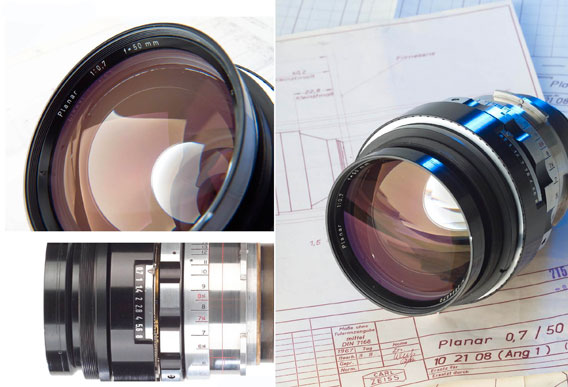
Ed DiGiuilio, the former president of Cinema Products Corporation, who was at the time also responsible for adapting the Angenieux 24-480 zoom for Kubrick’s artistic narration in “A Clockwork Orange,” remembers in the article from American Cinematographer that he suggested filming Barry Lyndon’s castle scenes with regular super-speeds (that were at least two stops slower) and additional fill lights. Kubrick was not fond of the idea because he wanted to “preserve 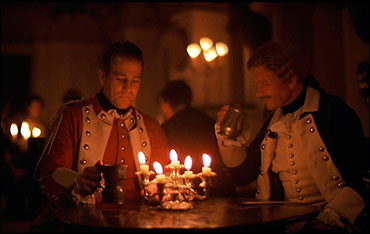 the real feel and natural patina of those old castles.” He took the Planar 50mm/f0.7, lit up a bunch of triple-wicked candles with flames three times larger and melt rate three times faster, and push-developed the whole film one stop to 200ASA to get the Rembrandt-esque feel he was after. The filming also held its directorial challenges; the slowness of the actors in the scenes is partly due to the requirements of not leaving the extremely shallow depth of focus.
the real feel and natural patina of those old castles.” He took the Planar 50mm/f0.7, lit up a bunch of triple-wicked candles with flames three times larger and melt rate three times faster, and push-developed the whole film one stop to 200ASA to get the Rembrandt-esque feel he was after. The filming also held its directorial challenges; the slowness of the actors in the scenes is partly due to the requirements of not leaving the extremely shallow depth of focus.
The movie “Barry Lyndon” was a box-office flop, but the bold chiaroscuro castle scenes lit only with candles remain a pioneering cinematic achievement if there ever was one. According to Wikipedia, there were other movies shot with this lens, most notably “Schindler’s List,” “Shakespeare in Love” and “The English Patient,” but none exploited the legendary wide-open performance of this unique lens. The Zeiss Planar 50mm/f0.7 (sometimes used by Kubrick with the additional Kollmorgen anamorphic attachment to get a wider angle of view) helped create 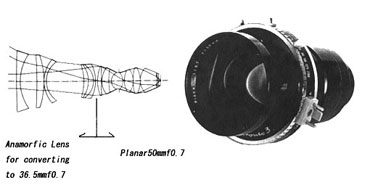 some of the most amazing and unique imagery in motion picture history, but without “the man” behind the camera, the Planar would remain just another special-purpose-built lens in the annals of optical oblivion. The lens popped up at a WestLicht Photographica auction not long ago with an opening bid of $11,300. I do not know if it sold, but if not… I’ll have mine in an EF mount, please.
some of the most amazing and unique imagery in motion picture history, but without “the man” behind the camera, the Planar would remain just another special-purpose-built lens in the annals of optical oblivion. The lens popped up at a WestLicht Photographica auction not long ago with an opening bid of $11,300. I do not know if it sold, but if not… I’ll have mine in an EF mount, please.
Ales Bravnicar
www.ShootTheCenterfold.com




















Being a Kubrick fan, i found this post quite delightful.
Cheers, Aleš 😉
I’m also a huge Kubrick fan and great reads Ales…
Thank you for writing this. Years ago I read about that lens and others. that Kubrick used for Barry Lyndon. This article brings them back to mind. Hopefully I won’t forget the possibilities and the inspirational story of how a fanatical film maker used amazing equipment to create what he wanted. Never forget that sometimes it takes great efforts to do great things . . . even if it might be a flop.
There’s definately a great deal to learn about this issue. I like all of the points you have made.
Hi, I will be shooting a film and want to build something close to the Kubrick lense from Barry Lyndon. I purchased a Rodenstock TV Heligon 50mm f/0.75 Cine Lens. I want to find out what to do to this to make it work for our film. I also heard he attached a kollmorgen projection lens 70mm. Please advise 🙂